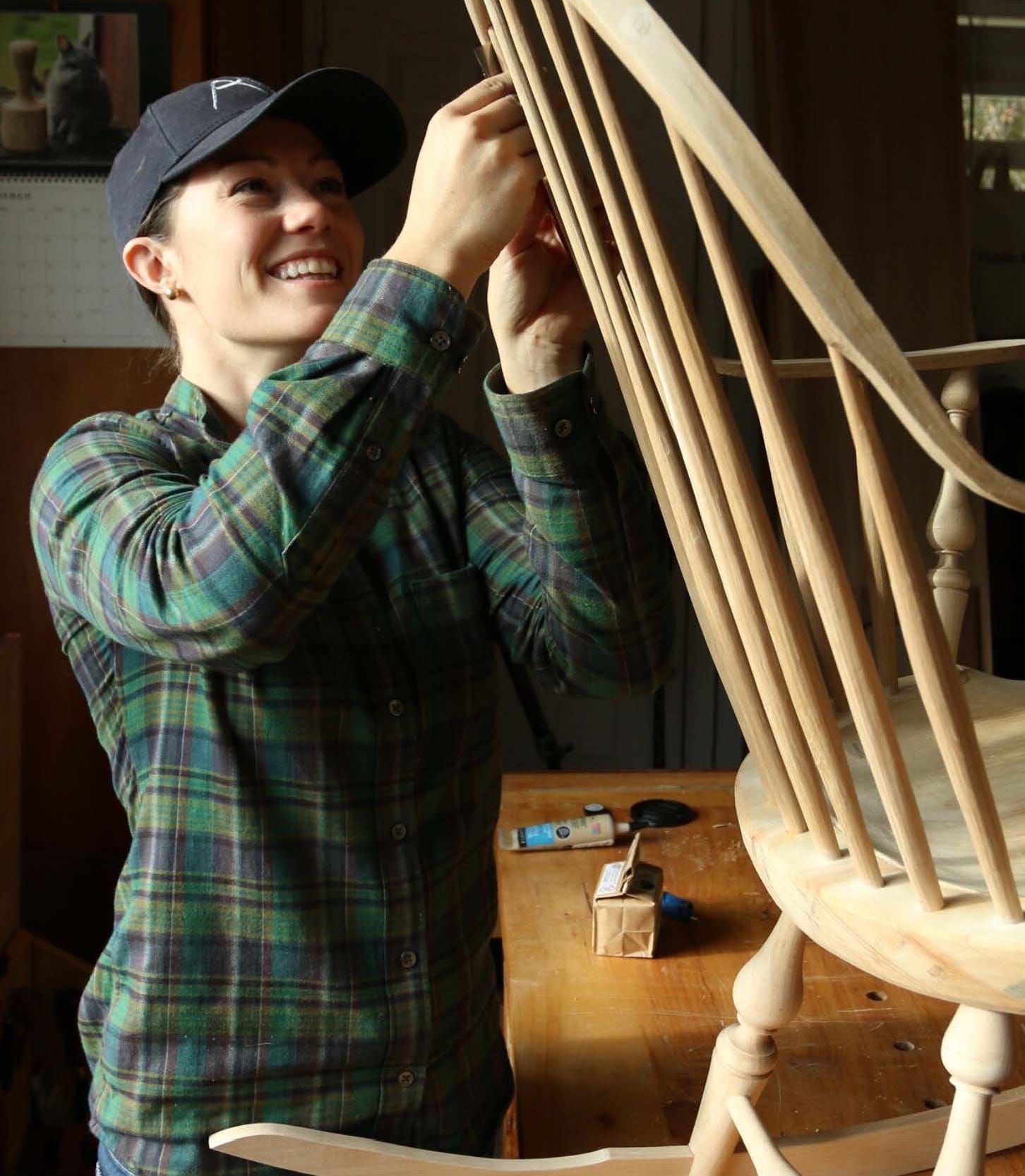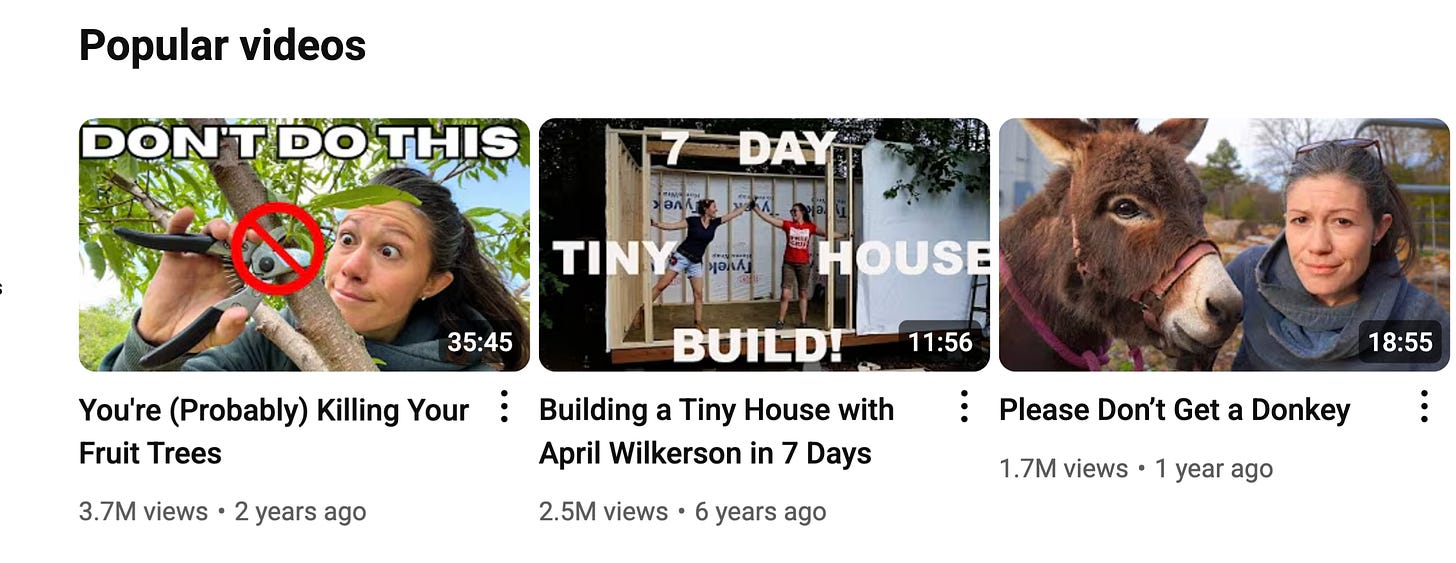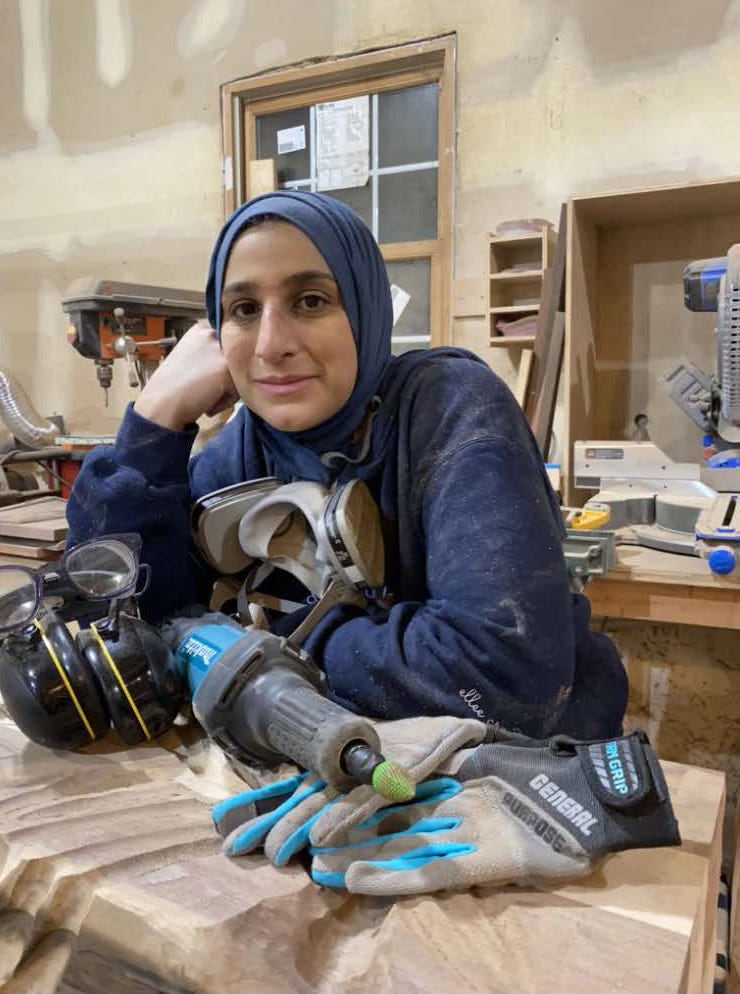I think it’s only fair to mention that the woodworking influencer business is shockingly similar to the magazine advertising business (which paid my salary for 15 years). Manufacturers would regularly sponsor content they wanted to see (called “advertorials”) that are supposed to be labeled as such – but aren’t always. Many advertisers would place “image” advertising in your magazine, which was basically a sponsorship. They weren’t looking for sales. They were just paying for access to and association with the magazine. Finally, a few advertisers were like an affiliate program. They only paid for the ad if they got sales. (This is the lowest form of advertising and is typically accepted by magazines that are desperate. Think Franklin Mint ads. Ads for bizarre watches, commemorative plates and boner pills.)
So no one is ethically pure in this business. But you can have ethics. And you can ignore them if it suits you.
— Christopher Schwarz
In part two of our three-part series on influencers and content creators, Anne Briggs (Anne of all Trades), Jimmy Diresta, Jim Hamilton (Stumpy Nubs), Hadeel Khater (Four Rivers Studio), David Morris (Worst Workshop), Marc Spagnuolo (The Wood Whisperer) and Joe Thiele (Boundary Fog Furniture) delve into the nuances of deals, money matters and how they manage reviews.
You can read part one, here.
When to Take a Deal
“There are a couple of things you’ll look at,” says David Morris of Worst Workshop. “One is the product. There are things that will come your way that the audience just is not going to be interested in. And it doesn’t mean that I’ll never take that deal. It means that it’s going to cost a lot more for me to do that.”
If it’s something that his audience might not be interested in, they’re not going to want to watch a commercial about it, Morris says.
“I know that they’re likely to skip that, and some of them won’t come back,” he says. “It’s how it works. When you look at the retention graph for your videos, you’ll see that when you do a little ad spot, it dips, and most of them come back after they’re skipped over. But some of them find something else to do. And that’s the struggle in any video. You want to maintain their attention the whole time and give them no excuse to ever leave. And that’s what an ad is – it’s an excuse for them to leave. So it better be worth your while.”
If Morris finds a good product that he feels people would be interested in, he’s more likely to take that deal, even if it pays a little less than other offers.
“There’s a balance between what the product is, what they’re trying to get me to sell and how much money they’re willing to pay,” he says. “There are some things that I really believe in and some products I’ve worked with for very little money just because I like the people behind the company and I wanted to help them. Usually, you know that there’s a cost to you when you’re doing an ad that’s going to hurt your video. So you have to find compensation in that.”
Morris draws a line for products or companies that have a bad reputation.
“If it will hurt my reputation If I work with them, those are just out,” he says. “I’m not going to do those.”
When Diresta signs a deal, he barely reads the contract.
“I read two things, how much I’m getting paid and when it’s due,” he says. “And then I sign it. I don’t read anything inside. I don’t care. Ownership, it doesn’t matter. These videos aren’t that big of a deal. I’ve been in this for 14 years. There hasn’t been one video that’s been so stupendously an earner that God forbid I lost the rights to it. Any company I work for, I’m like, ‘If you’re going to pay me to do a video with your product in it, you know what? You can have the whole entire video too. Cut it up, make shorts, I don’t care. Some people hold that precious, but it's not like the old days. It’s not like a movie property where this one video is going to be an earner forever. You’re going to get a couple of thousand dollars in adsense out of it if you’re lucky. It’s the collective grouping of videos on your channel that gets you the most money, not one individual video. So if I’m working for anybody, I’m like, take the video, do what you want with it. I don’t care. You could post it on your channel at the same time. It’s on my channel. You have your audience, I have mine. They’re never going to detract from one another in my opinion.”
Diresta says when making a deal, how much he likes a company matters. A company may offer him $5,000, $10,000, even $25,000 to do a video.
“It all depends on their budget and how much they believe in me and how much I like them,” Diresta says. “If it’s a company that I don’t like very much, but they have a big budget and they’re willing to pay me a lot, I’m like, ‘OK, I’ll do it.’ And if it’s a company that I really like and they don’t have any money and they’re willing to give me a free tool, I’ll go lower than I typically do.”
Briggs, too, has different budget levels.
“If it’s a company that I simply don’t want to work with, I have integrity and I don’t work with them,” she says. “If it’s a company I know can pay well, but will require more back and forth than I have capacity for, I budget to include a middleman to handle that stuff. If it’s a company I know doesn’t have a huge budget but there’s mutual benefit to working together, I get creative about how we can help one another make it work. Stewardship is important to me.”
But Briggs also believes there are instances where the Robin Hood principle of robbing the rich to feed the poor is an acceptable strategy.
“Full disclosure, I had an opportunity to work with a cigarette company at one time,” Briggs says. “At that time I was like, morally, I don’t feel great about this. But also, with the amount of money we were talking about, I could turn it into something that could help so many people. Plus, I wouldn’t be marketing on their behalf, everything I did for them would be behind a paywall and limited by an 18-plus age disclosure, so would I be willing to take that money to do that? And, as long as I could attach that money made to finance a project I knew would benefit others, the answer has historically pretty much been ‘yes’ for those kinds of things.”
Another example: A big agriculture company Briggs would normally never associate with paid Briggs to make a campaign getting young people interested in farming.
“Did I want to take their money, which felt like dirty money?” Briggs says. “Of course not, but as a young, regenerative farmer who’s desperately trying to get more young people into farming, who also really understands how difficult it is to do so? And I can use their money, and this campaign, to honestly further the message I think is important? Yes, however, I’m going to charge them accordingly and I’m going to be extremely careful about what I give them creative control over because I will not say anything or do anything that is outside of my character or morals. And so with that, I was able to meet their creative needs and I made a beautiful campaign for them I was truly proud of. I didn’t do or say anything that I didn’t feel wasn’t in complete alignment with who I am or the message I wanted to share with potential young farmers. I ultimately used their money to finance an educational internship program on our farm. And in the end, both sides were happy.”
Briggs says because she’s gone about it the right way, robbing the rich hasn’t affected future partnerships or her audience.
“I now have a very valuable brand,” Briggs says. “I now know that I can and successfully, repeatedly do charge and get paid more than most of my ‘influencer’ counterparts that have very similar view counts, but way less audience trust, because I now have 12 years of evidence that I will make more money for the companies I choose to work with, with fewer views, simply because I’ve been picky about who I’ve worked with. I’ve played the long game, and maintaining audience trust has always been my first priority. Brands that I do choose to work with know they’re not just buying casual views, they’re buying engagement, which is far more important to me and my creative process. I’m going to insist on having a lot more creative control over the content we create together because we both understand that the only way that their ad is going to work through me is if I present it in my way to my audience. If I’m given the freedom to do that, then I can almost always guarantee the campaign will be successful.”
Sometimes, when you take a deal, it ends without rhyme or reason. Diresta says it’s akin to a relationship – every relationship is different and some just die for no good reason.
“I have no idea why Thunder Laser didn’t want to answer me back anymore,” Diresta says. “I have a Thunder Laser machine that I don’t show because they don’t answer my emails. I don't know why they don’t want to talk to me. Maybe they don’t like me. Maybe I said something that offended somebody in a video or podcast. I’ll never know. But now I work for Aeon Laser. They reached out to me and said, ‘You're funny. We love your Netflix show. You’re really creative.’ I made a deal for one thing, and then out of nowhere, they're like, ‘Hey, do you want this other machine too, because we think you’ll have fun with it.’ I’m like, ‘Sure.’ And now they’re like, ‘Hey, do you want this other machine, which is tens of thousands of dollars?’ I’m like, ‘Of course, I’ll take it.’ Sometimes the love is overflowing and sometimes it just gets shut off. You don’t know really why. Just like every interpersonal relationship, it’s the same thing with a company. You really want to get a champion. If you lose that champion, things sometimes go loosey-goosey, and that’s where it sometimes ends. But the good thing is that particular champion could end up at another company and they bring you into that company, and that’s happened several times.”
For Khater, deciding when to take a deal is becoming more difficult.
“Honestly, a big reason why I haven’t capitalized on a lot of these things like brand deals and partnerships and stuff is because it’s hard for me right now to balance all of that while also finding brands that I find ethical to promote while also navigating everything that’s happening in the world and not being completely insensitive to it,” Khater says. “There are people who balance all of that really well, but for me, it’s personally a reason why I’ve kind of taken a step back for a little bit until I could figure out how to come back and approach it in a way that feels comfortable to me.”
Often, Khater says, the brands that have the budgets are big brands with questionable ethics.
“I’ve turned down so many partnerships for that reason,” she says. “And sometimes I’m just kicking myself like, ‘Is it time to be this moral hero? I have bills to pay.’ But then it’s coming back to being like, ‘OK, well, in the future, what is the thing that’s going to matter to me?’ And for me personally, it’s being able to stand on the things that I put out there and to not feel like I’ve sold out my own, that I’ve compromised some of the things that I believe in just to make money.”
Asking for What You Deserve
Have you ever seen the prank where someone runs into a doorway covered in stretch wrap?
“That’s where most creatives are,” Diresta says. “They’re right at that stretch wrap, getting taken advantage of by everybody they talk to because they’re fearful. They’re afraid they’re going to lose the gig, they’re going to lose the bid, they’re going to say too much, they’re going to say not enough. And they’re all stuck in that stretch wrap. And when you break through that stretch wrap and you basically say, ‘I-D-G-A-F anymore, I’m tired of being taken advantage of,’ that’s when the business savvy starts. That’s when ‘I don’t care if I lose this, this is what I deserve. This is what is my day rate is. I need this many thousand dollars a day or this many hundreds of dollars a day. I don't care what you think of that.’”
Some people, Diresta says, never break through. But he broke through a long time ago.
“I got sick of being taken advantage of or I got sick of taking advantage of myself by not being able to speak up and look directly at a client and say, ‘That’s $10,000 in value to me. If you don’t want to do it, that’s fine,’” Diresta says. “Being able to look somebody right in the face and say that takes a lot of practice, and your voice will shake the first time you say that.”
Diresta used to work with an interior designer and one day, 20 years ago, as they were driving to a job, the interior designer turned to Diresta and said, “You’re worth $1,500 a day and don’t ever let anybody else tell you you’re not. You have this skill, that skill, this skill, that skill. Nobody has that. You have five times the amount of knowledge and know-how on any job site. Don’t let anybody tell you you’re worth less than $1,500 a day.”
Diresta says that conversation – and getting kicked in the gut a bunch of times – helped him develop a take-it-or-leave-it approach.
Keep reading with a 7-day free trial
Subscribe to The American Peasant to keep reading this post and get 7 days of free access to the full post archives.












